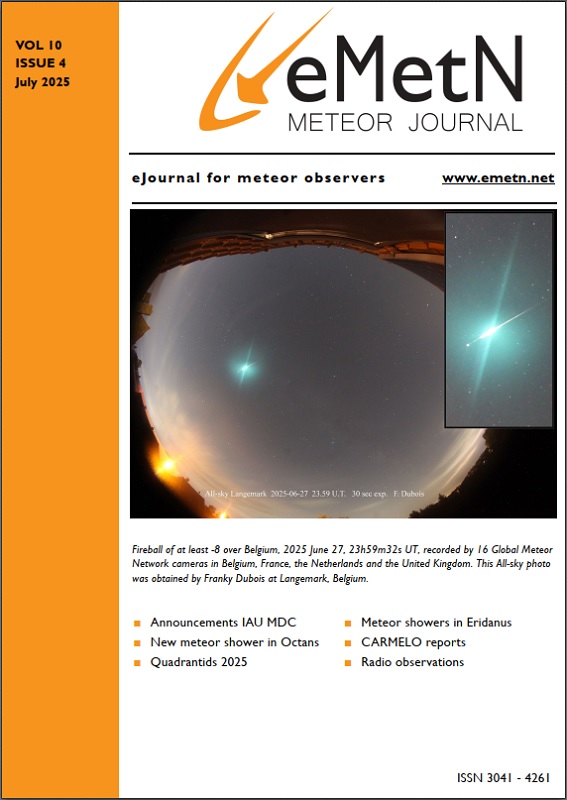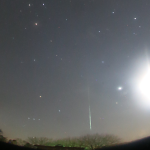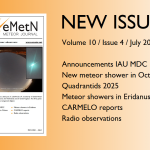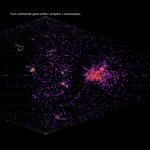Thanks to the broad international cooperation of video meteor observers from several European countries, a multi-national network EDMONd (European viDeo Meteor Observation Network) was created. As a result of its work, the first version of the EDMOND database (European viDeo MeteOr Network Database, v2.0), containing data from the years 2009, 2010, 2011 and half of 2012, was presented at the IMC conference in La Palma, Spain in 2012 (Kornoš et al. 2013). The European video MeteOr Network Database (EDMOND) has been established only recently (Kornoš et al., 2014a,b). The cooperation between individual networks has begun in 2009, when a first orbit was being derived based on shared observations of the same meteor by CEMeNt and SVMN. In spring 2010, we contacted the Polish and Hungarian networks (PFN and HMN). First data were obtained, combined, and assessed using different detection and processing tools (UFO Tools, MetRec). In the second half of 2011, Italian stations (IMTN) were also incorporated in EDMONd for the 2011 Draconid observing campaign. This collaboration resulted in a paper presenting precise orbits of meteoroids associated with comet 21P/Giacobini-Zinner (Tóth et al. 2012). Inspired by this success, the UK network UKMON was established in 2012, which shared observing space with the French network (BOAM). In 2012, observers affiliated to the International Meteor Organization Video Meteor Network (IMO VMN) have started to share their data, whereas the data of EDMONd and IMO VMN have been merged. The IMO VMN has been created in 1999 and at present consists of observers from Germany, Slovenia, Italy, Hungary, Finland, Portugal, Netherlands, United Kingdom, Spain, Poland, Belgium, United States, Australia, Greece, and Russia. Nowadays, the following national networks, in alphabetical order, are connected to the European viDeo Meteor Observation Network:
BOAM (Base des Observateurs Amateurs de Metéores, France)
BosNet (Bosnia)
CEMeNt (Central European Meteor Network, cross-border network of Czech and Slovak amateur observers)
CMN (Croatian Meteor Network or Hrvatska Meteorska Mreza, Croatia)
FMA (Fachgruppe Meteorastronomie, Switzerland)
HMN (Hungarian Meteor Network or Magyar Hullócsillagok Egyesulet, Hungary)
IMO VMN (IMO Video Meteor Network)
MeteorsUA (Ukraine)
IMTN (Italian amateur observers in Italian Meteor and TLE Network, Italy)
NEMETODE (Network for Meteor Triangulation and Orbit Determination, United Kingdom)
PFN (Polish Fireball Network or Pracownia Komet i Meteorów, PkiM, Poland)
Stjerneskud (Danish all-sky fireball cameras network, Denmark)
SVMN (Slovak Video Meteor Network, Slovakia)
UKMON (UK Meteor Observation Network, United Kingdom)
The latest established network (January 2014) is on the southern hemisphere – BRAMON (BRAzilian MeteOr Network). It´s an independent network of the EDMOND database, its task is to map the activity of meteor showers in the southern hemisphere.
Amateur stations mostly use sensitive analog Closed Circuit Television (CCTV) cameras based on Sony chips (1/2″ ExView HAD, 1/3″ Super HAD II, 1/3″ Super HAD Effio 960H) with a typical resolution of 720 × 576 pixels and a lens with a focal length of 3–8 mm and focal ratio of f/0.8–f/1.4. Most stations use UFOCapture software (from UFO Tools of SonotaCo 2009) for automated meteor recognition, with the exception of the HMN and IMO VMN, which use the MetRec package (Molau 1999). The typical field of view is around 70° horizontally. These stations are able to detect meteors brighter than magnitude +2.5mag. However, the detection efficiency and sensitivity depends on the combination of the CCTV camera, lens, and local sky conditions at the observing site. The main equipment of SVMN is the AMOS camera (All Sky Meteor Orbit System), developed and constructed at the Astronomical and Geophysical Observatory of the Comenius University, located in Modra (Zigo et al. 2013).
The database itself is understood to be multiplatform, therefore combines outputs from systems with different parameters as well as from systems with different recording and evaluation methodology (UFO Capture, MetRec, CMN). Because of the inhomogeneity of the input data, it is necessary to establish reduction criteria within the EDMOND database (Kornoš et al. 2014a,b), which makes it possible to exclude orbits from the database that does not meet the required geometric conditions or due to inhomogeneity they are not compatible.
First of all, it was necessary to convert MetRec data to the UFOOrbit format. The MetRec data were imported via the conversion software INF2MCSV written by SonotaCo. This program supports several conversion methods. To obtain the optimal match with the UFOAnalyzer results, we tested about 230 double-station meteors detected in a direct campaign between April and June 2011 where one station was using MetRec and the second one UFOCapture. Resulting data were uploaded into UFOOrbit. Finally, theUFOOrbit output generated the quality parameter (QA), the duration of the meteor (dur), and the geocentric velocity (vg) which have been assessed. Following these parameters, the analysis shows that the best criterion for data conversion from MetRec to a csv file for UFOOrbit is the transfer method (Y). This method provides the best matching data with respect to the UFOAnalyzer output, where errors with respect to the geocentric velocity (vg) and the duration of the meteor (dur) are minimized. The result of applying the reduction criteria is a significant reduction of the raw (or Q0) multi-station orbits that are stored in the output version of the EDMOND database. However, these multi-station orbits are essential for the meteor spectra analysis, which are also part of the EDMOND database. The multi-station orbits are necessary to determine the origin of the body and due to the knowledge of the heliocentric parameters of the meteoroid orbit and the complementary parameters (e.g. the Tisserand´s parameter TJ in relation to the Jupiter) it is possible to determine whether the body is of cometary or asteroid origin or belongs to one of the known meteor showers. As a source of orbital elements of the known meteor showers, IAU MDC (Jopek et al. 2014) list of meteor showers was used. Individual meteor orbits in the EDMOND database are assigned to the meteor showers using the Drummond criterion of similarity (Drummond 1981). The similarity function uses for orbits comparison their orbital elements (e, q, i, ω, Ω), the limit value for the purposes of the EDMOND database was set at DD < 0.1.
REFERENCE ARTICLES
In case you use EDMOND database, please refer to:
[1] Kornoš L., Koukal J., Piffl R., and Tóth J. (2014a). EDMOND Meteor Database. In Gyssens M., Roggemans P., Zoladek P., editors, Proceedings of the International Meteor Conference, Poznań, Poland, Aug. 22-25, 2013, International Meteor Organization, p. 23-25.
[2] Kornoš L., Matlovič P., Rudawska R., Tóth J., Hajduková M. Jr., Koukal J., and Piffl R. (2014b). Confirmation and characterization of IAU temporary meteor showers in EDMOND database. In Jopek T.J., Rietmeijer F.J.M., Watanabe J., Williams I.P., editors, Proceedings of the Meteoroids 2013 Conference, A.M. University, Poznań, Poland, Aug. 26-30, 2013, p. 225-233.
and refer to the web page http://www.daa.fmph.uniba.sk/edmond





